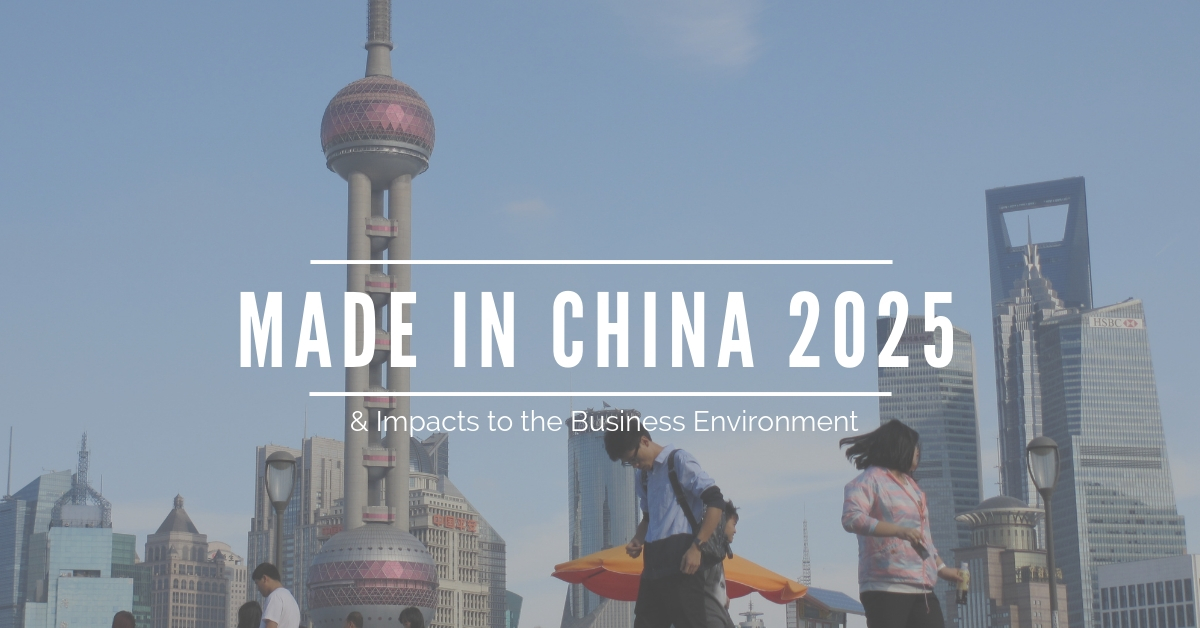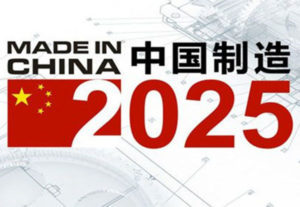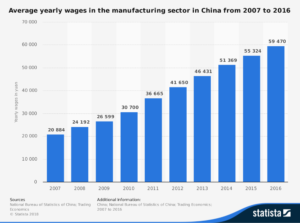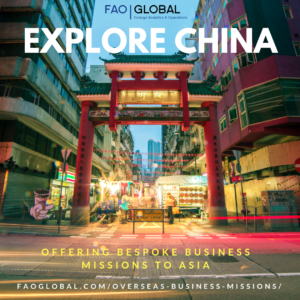
Introduction

China’s Made in China 2025 Plan (also called “China Manufactured 2025”) has gained sizeable attention in Western countries in 2018 as Western countries decry forced technology transfers in Joint Ventures with Chinese firms, tensions escalate in the US-China trade war, and scrutiny of Chinese acquisitions of sensitive technology heightens in the U.S., European Union (EU), and Australia. Foreign firms wishing to operate in China should take into account both potential opportunities and pitfalls in China’s business environment and how it relates to China’s own industrial ambitions in this political climate.
“Made in China 2025”
China’s “Made in China 2025” (MID 2025) was first launched in 2015 by Chinese Premier Li Keqiang and his cabinet. The cabinet, known as the State Council of the People’s Republic of China, is the highest administrative body in the Chinese government. The 2025 plan identifies ten sectors as priorities to develop in order to upgrade China’s industry and economy, including new advanced information technology, automated machine tools & robotics, aerospace and aeronautical equipment, maritime equipment and high-tech shipping, modern rail transport equipment, new-energy vehicles and equipment, power equipment, agricultural equipment, new materials, and biopharma and advanced medical products. The plan calls for indigenous research and development, localization of production by Chinese entities, among other things. In 2017, the State Council launched demonstration cities such as Guangzhou, a flagship economic city in southern China, to boost implementation of the strategy.
This plan voices the imperative need for upgrading the Chinese economy by moving from assembly and lower-end production to higher value-added positions in the global supply chain driven by innovation and ownership over core technologies. Increased scrutiny of high-tech acquisitions in Western countries bolsters the Chinese domestic argument of not relying on Western technology. Some argue that China has passed its Lewis Turning Point, which is “an economic inflexion point that developing countries go through when they run out of cheap rural labor.” As a result of rising labor costs (see graph 1), China is losing its competitive advantage in the labor-intensive manufacturing industry. In order for China to avoid the middle-income trap, a situation in which a country is “trapped” in middle-income status due to slowing economic growth, China needs to upgrade its manufacturing sector to see significant economic growth.
According to the World Bank, only 13 out of 101 middle-income economies in the 1960’s had transitioned by 2008 to being considered as high-income economies. As classified by the World Bank, China is currently an upper middle-income country, and in order to be classified as a high-income country, it is imperative for China to transform its economy by driving forward its higher-end manufacturing and services. The process of upgrading its industry, will however lead to a greater competition of Chinese firms with foreign firms from advanced economies for both the domestic market and international industrial leadership.

Source: www. Statista.com
China’s Overall Tech Strategy
Amid the recent hype and focus on “Made in China 2025”, it is also important to realize that it is only part of the grander plan of China’s evolving technology strategy and business environment. The United States’ Section 301 findings on China’s practices related to technology transfer, intellectual property, and innovation lists two main documents on China’s technology development strategy. The first is the National Medium- and Long-Term Science and Technology Development Plan Outline (2006-2020) (MLP) issued in 2005, and the second is the China Manufacturing 2025 plan. The former is proposed by former Chinese President Hu Jingtao’s administration (2003 to 2013) and emphasized indigenous innovation and development of advanced core technologies. Directly inspired by Germany’s “Industrial 4.0” plan, MID 2025 advances a more comprehensive goal that recognizes the need to integrate traditional industries with digitization and modern technologies. To complement this effort, the State Council under Premier Li Keqiang has also proposed supplementary strategies such as “Internet Plus,” which “integrate[s] the mobile Internet, cloud computing, big data, and the Internet of Things with modern manufacturing.”
To understand the business environment in China, foreign firms should also recognize that general roadmaps such as these must be accompanied by implementable policy designed by various bureaucratic agencies, and by different levels of government. Not only do central government ministries, such as the National Development and Reform Commission, translate strategic directives to specific policies, but local governments also have their own initiatives and policy. Some have rebranded their regional industrial blueprints to conform to the MID 2025 strategy, which often consists of fiscal subsidies and tax incentives. In addition, local governments are generally eager to create a better business environment and attract more FDI to their regions, and could create preferential policy for foreign capital. Regional variations in the business & legal environments will continue to be an important part of policy considerations relevant to business strategy.
What Foreign Firms Should be Aware of
Companies should be attentive to the specific incentivizing policies in their respective industries or measures for improving the business environment at both the central and local levels. This could be policy ranging from encouraging innovation and giving tax breaks, to granting subsidies. Some policies clearly apply to foreign firms, such as those in special economic zones and high-tech industrial development zones. These areas apply their policies to all firms located within their zones regardless of ownership. Policy announcements can also be vague as to whether or not the funds extend to foreign businesses, so it is advisable for foreign businesses in China to maintain communication with policy-making agencies. This is vital in order to understand the business opportunities that such policies could entail.
In the current political environment where China is squeezed in the trade and outbound FDI space, there will also be windows of opportunity that open up to foreign businesses as China relaxes its rules on incoming FDI. Companies should also see improvement in the intellectual property rights environment as the Chinese government seeks to encourage innovation.
However, as the European Union Chamber of Commerce in China put it, China’s industrial plans put “industrial policy ahead of market forces” (European Union Chamber of Commerce. 2017. “China Manufacturing 2025.”). This means that foreign firms may face government intervention in business practices and market disadvantages due to preferential access to grants and subsidies for domestic firms. Business will still face regulatory barriers to doing business in China in certain industries and unofficially in certain localities. Bureaucratic red tape can be opaque and applied inconsistently across regions, sectors, and industry. There could also be potentially less market space for foreign firms competing with domestic firms in industries that have designated localization targets set by the Made in China 2025 policies. Further risks emerge with ensuring law compliance, particularly with new laws such as the cybersecurity law.
Outlook Amidst the US-China Trade War
The on-going US-China trade war is going to impact how the Chinese government carries out its plan for technological upgrade of its industries. Already, $250 billion U.S. dollars (USD) worth of imports are impacted by tariffs heading from China to the United States. These tariffs are additional added costs to production and will dampen the demand of products for both domestic Chinese firms producing in China and also for foreign firms who have manufacturing based in China. These tariffs, together with stricter rules imposed by the Committee on Foreign Investment in the United States (CFIUS) to oversee Chinese acquisition of American firms, restrict Chinese firms’ access to capital and core technology for the purpose of industrial upgrade. This indicates two trends for the direction that China’s industrial policy is going: 1) the government will need to rely more on its policies of enhancing domestic research and development, innovation, and technological development to gain the intellectual capital needed for its industrial plans. 2) The country is going to be under greater pressure to retain and encourage FDI, which might lead to positive changes to the business environment for foreign firms.

Analyst Bio
Siyao Li is a Ph.D. student in Political Science at the University of Pennsylvania. Her research focuses on the relationship between firms and government, particularly as pertaining to policies related to technology firms and technological development of the state. Her work experience prior to entering graduate school includes Goldman Sachs and the American Enterprise Institute in Washington D.C.
Interested to Write for FAO Global?
We are always seeking highly-motivated individuals with backgrounds in business and policy focused on China, Southeast Asia, the Belt and Road Initiative, and inbound FDI to the U.S. to contribute and consult for FAO Global. Contact us Here.

